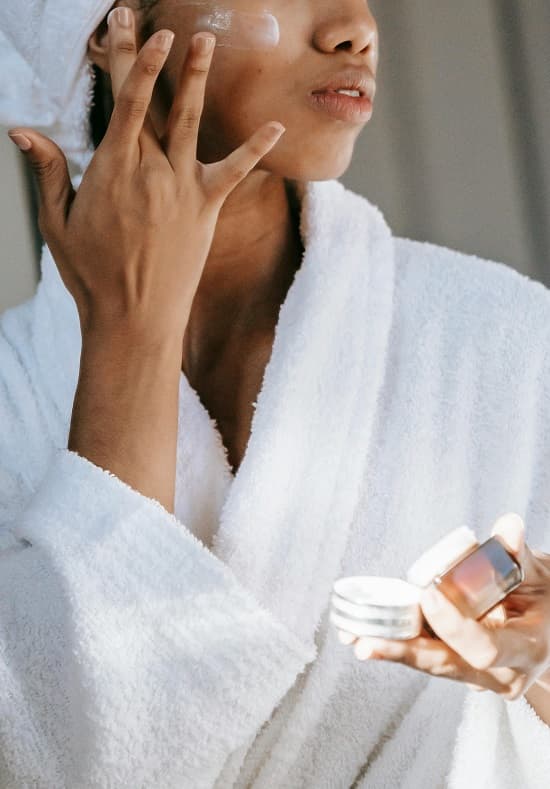5 Common Beauty Mistakes That Cause Hyperpigmentation and How to Avoid Them
Skin pigmentation refers to harmless spots that may appear on the face or body. While hormonal factors contribute to its development, several beauty mistakes can also be linked to it, particularly hyperpigmentation on the skin.
When it comes to achieving flawless skin (which everyone deserves, by the way), we often inadvertently commit beauty mistakes that can lead to hyperpigmentation, dark spots, and uneven skin tone. Hyperpigmentation, or skin darkening disorders, ranks among the most frequently discussed issues in dermatology clinics worldwide.
Although hyperpigmentation isn’t detrimental to your health, skin discoloration can be distressing both physically and emotionally. The condition arises from an excess production of melanin, the pigment responsible for skin color, resulting in stubborn areas of discoloration that are difficult to fade.
Understanding these common beauty missteps and knowing how to avoid them is essential for maintaining a glowing complexion. And, ahead are insights into everything you should know about hyperpigmentation, along with five prevalent beauty blunders that contribute to it, and effective strategies to prevent them.
What is hyperpigmentation?
Hyperpigmentation is a common skin condition characterized by patches of skin that are darker in color than the surrounding areas. This darkening occurs due to an excess production of melanin, the pigment responsible for skin color.
Hyperpigmentation can manifest as spots, patches, or areas of discoloration on the skin, and it can be caused by various factors such as sun exposure, hormonal changes, inflammation, skin injuries, or certain medications.
What are the types of hyperpigmentation?
There are several types of hyperpigmentation, each with distinct characteristics and causes:
Sunspots (Age Spots or Liver Spots):
These are dark spots that develop on areas of the skin exposed to the sun, such as the face, hands, shoulders, and arms. Sunspots are typically small, flat, and brown in color. They occur due to prolonged sun exposure and UV radiation, which triggers melanin production in localized areas.
 Photo: Pexels / Sora Shimazaki
Photo: Pexels / Sora Shimazaki Melasma:
Melasma presents as brown or grayish-brown patches on the face, particularly on the cheeks, forehead, upper lip, and chin.
It is more common in women and can be triggered or worsened by hormonal changes, such as pregnancy, oral contraceptives, hormone replacement therapy, or sun exposure. Melasma patches are often symmetrical and can be challenging to treat.
Post-Inflammatory Hyperpigmentation (PIH):
PIH results from skin trauma or inflammation, such as acne breakouts, insect bites, cuts, burns, or harsh treatments like chemical peels.
It appears as dark spots or patches in areas where the skin has healed from the injury or irritation. PIH can affect people of all skin types but is more noticeable in individuals with darker skin tones.
Freckles:
Freckles are small, flat, brownish spots that are genetically determined and often appear on sun-exposed areas of the skin, especially in fair-skinned individuals. Unlike sunspots, freckles are usually uniform in color and may darken with sun exposure.
Drug-Induced Hyperpigmentation:
Certain medications or chemicals can cause hyperpigmentation as a side effect. This type of pigmentation may occur as a reaction to medications like antibiotics, anti-malarial drugs, chemotherapy drugs, or as a result of contact with substances like coal tar, dyes, or metals.
Hormonal Hyperpigmentation:
Hormonal changes, such as pregnancy (chloasma or “mask of pregnancy”) or hormonal imbalances, can lead to hyperpigmentation. These hormonal shifts can stimulate melanin production, causing dark patches or areas of discoloration on the skin.
The Common Beauty Mistakes That Cause Hyperpigmentation
Not Wearing Sunscreen
Sunscreen is a non-negotiable skincare essential, yet many people overlook its importance. UV radiation from the sun triggers melanin production, leading to hyperpigmentation and premature aging.
To avoid this, always wear a broad-spectrum sunscreen with SPF 30 or higher, even on cloudy days. Reapply sunscreen every two hours, especially when outdoors or engaging in water activities.
Over-Exfoliating
Exfoliation is beneficial for removing dead skin cells and promoting cell turnover, but overdoing it can damage the skin barrier and cause inflammation that leads to hyperpigmentation.
Limit exfoliation to 1-2 times per week, depending on your skin type. Choose gentle exfoliants such as chemical peels with alpha hydroxy acids (AHAs) or beta hydroxy acids (BHAs) to avoid irritation.
Picking at Blemishes
The temptation to pop or pick at blemishes (like pimples) is strong, but this can result in post-inflammatory hyperpigmentation (PIH). Picking at acne lesions or skin irritations increases inflammation and delays healing, leading to dark spots and scars.
Instead, treat blemishes with targeted acne products containing ingredients like salicylic acid or benzoyl peroxide to reduce inflammation and prevent PIH.
Using Harsh Products
Harsh skincare products, including those with high concentrations of alcohol or fragrances, can strip the skin’s natural oils and disrupt its barrier function. This can make the skin more susceptible to hyperpigmentation and irritation.
Opt for gentle, non-comedogenic products suitable for your skin type. Look for ingredients like hyaluronic acid, ceramides, and soothing botanical extracts to nourish and protect the skin.
Neglecting Post-Inflammatory Care
After experiencing a breakout or skin irritation, it’s crucial to provide proper post-inflammatory care to prevent hyperpigmentation. Use products that promote healing and reduce the risk of dark spots. Ingredients such as niacinamide (vitamin B3), vitamin C, retinoids, and licorice extract can help fade pigmentation and even out skin tone over time.
When addressing hyperpigmentation on the skin, it’s important to consider that topical therapies, such as creams and lotions applied directly to the skin, are commonly used for treatment.
Combination therapy, which involves using multiple topical treatments simultaneously, is often the most effective approach for treating hyperpigmentation. Sun exposure is the primary cause of hyperpigmentation, as the body darkens the skin to shield it from harmful ultraviolet radiation.
Therefore, the most effective preventive measure against hyperpigmentation is daily application of sunscreen and wearing sun-protective clothing.
Photo: Pexels / Ron Lach






